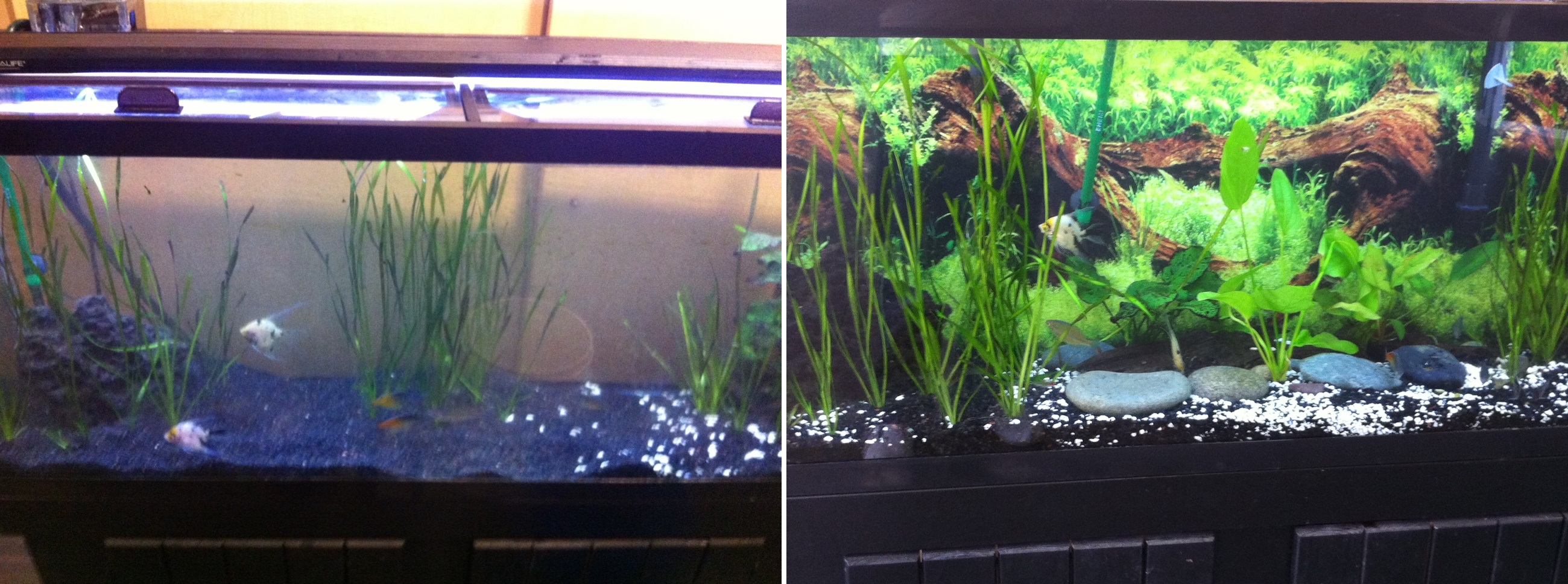As a Sidney-Pacific resident you may have noticed some changes to the lobby aquarium over the past few weeks. Many of you have asked for advice on maintaining not just a fish tank, but a natural living habitat for various organisms to coexist. Surprisingly, very little work goes into making a great-looking aquarium. However, like any craft, there are many small tidbits worth knowing that can save you many sacrificial guinea pigs… guinea fish? Either way, in this short guide I will write some of the holy rules of fishkeeping passed down to me.
1. Bigger is better
When starting out as a novice, it is a common mistake to want to buy as small a tank as possible. However, this is not the best route to take. Smaller tanks (30 gallons or less) are harder to maintain due to less volumes of water allowing for greater fluctuations in temperature and chemical balances. This often leads to disastrous and expensive results.
2. The biochemistry of fish world
There is a lot that can be said about the underlying biochemical mechanisms that keep a fish tank up-and-running. Fortunately for you, most of it is not necessary to successful fishkeeping. When starting a new tank you will need six things: water, a tank, an inexpensive water conditioner (fish do not like chlorine in their gills), gravel/substrate, light fixture and a filter.
3. Cycle of life
Next step is to cycle your tank. Fish poop just like us. Unfortunately, they also end up breathing some of their poop. You need bacteria in your tank to break down this nitrogenous poop into less toxic chemicals. Put a school of small hardy fish in the tank that will help culture these beneficial bacteria.
Your cycle should be complete in about a month or so. Thereafter, you will be able to slowly begin adding new fish into the tank (one fish every week to two weeks). Make sure to research species compatibility before mixing angry fish with peaceful ones. You may also add plants at any time you like, however be advised to do a bit of research into plantkeeping in the aquarium. Two good places to start are:
http://www.101tropicalfish.com/fish-compatibility-chart/freshwater-fish-compatibility-chart.php. (for fish)
and
http://www.liveaquaria.com/general/fwcompatibility_chart.cfm (for plants)
Voila! Enjoy your new domain as you rule over it as you see fit.
By Pedro E. Perez, SP aquarium chair

